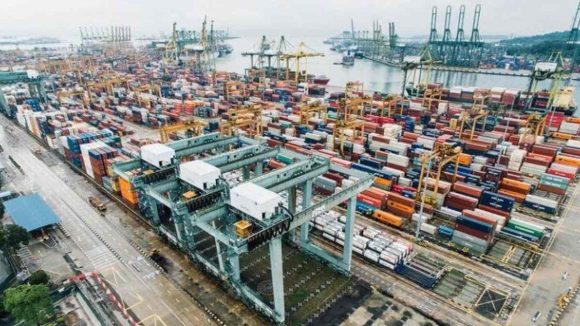Global supply chain problems are on the minds of nearly half (46%) of US business owners. A third of these owners expect the factors to dent the company’s performance. This is revealed in a new survey compiled by Alibaba.
For this survey, 300 Americans owning a small business were interviewed. Many of the participants are looking at digital answers to their problems.
Digital payments most useful
A third of the respondents cited that digital payments are the most useful digital-related tool for businesses. Package tracking came second, followed by prompt delivery, money-back, easy return policies, and after-sale protection.
Alibaba president Stephen Kuo says, “We are making the sourcing journey more intuitive and visualizable by helping enterprises of all sizes better utilize today’s leading e-commerce technologies.”
The survey also found that supply chain logjams continue to affect businesses even after the COVID-19 pandemic.
State of supply chain
Suppliers and manufacturers worldwide have encountered massive stock shortages this year. They have also been put up with a lack of decoupled inventory, fulfillment delays, and lengthy backorders on most popular items, according to cloud-based software company Extensiv.
“We expect that supply chain challenges will persist for the remainder of the year,” says Extensiv. It’s predicted that generally speaking, these challenges are driven by increased consumer spend. It’s also partially driven by the demand for the convenience of buying online and the catch-up required from last year’s bottlenecks. “And yet, despite 2023’s fragile supply chain network, companies are acclimating to these changes by addressing inefficiencies head-on and seeking to work smarter, not harder.”
Biggest supply chain headaches
Extensiv says retailers and suppliers are struggling to meet the rise in consumer demand. This while there is only limited availability for many parts and materials. “When speaking to various growth stage brands in our network, we’ve encountered everything from furniture manufacturers facing foam shortages to bike manufacturers losing payment terms due to maxed out component suppliers.”
Another massive problem in the supply chain cycle is increasing freight prices. The need for container shipping has grown considerably throughout the pandemic. “With worldwide lockdown measures inciting a surge in e-commerce sales, the response has been a greater import demand. [The demand] for raw materials and manufactured consumer goods,” Extensiv points out.
Earlier this year, the demand for greater import of raw materials was more substantial than anticipated. It was met with insufficient shipping capacity and unprecedented shortages of empty available containers.
About the author
Mia is a multi-award-winning journalist. She has more than 14 years of experience in mainstream media. She's covered many historic moments that happened in Africa and internationally. She has a strong focus on human interest stories, to bring her readers and viewers closer to the topics at hand.











